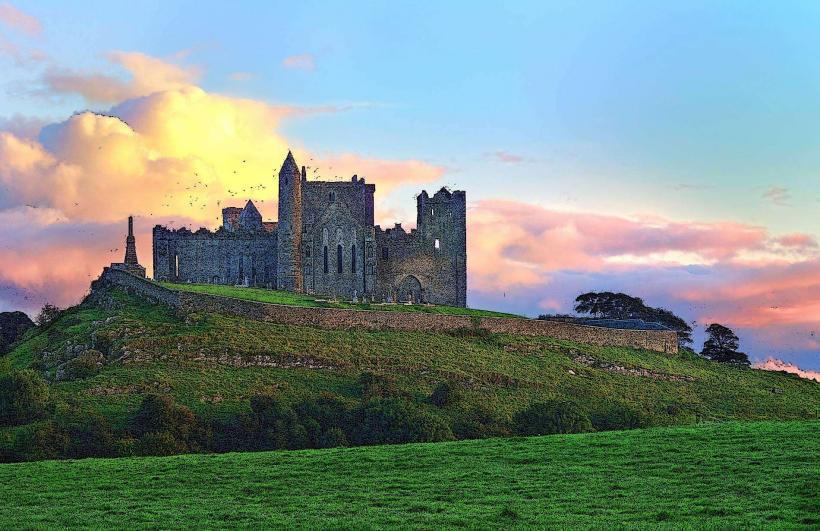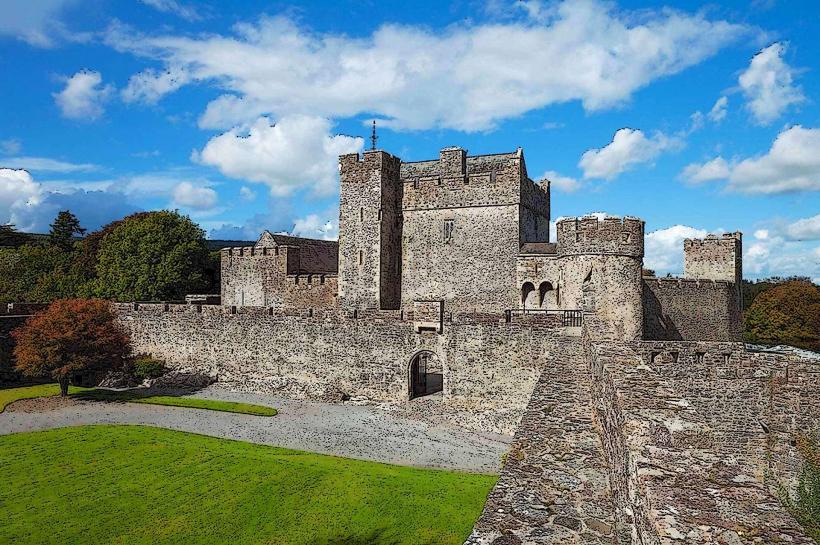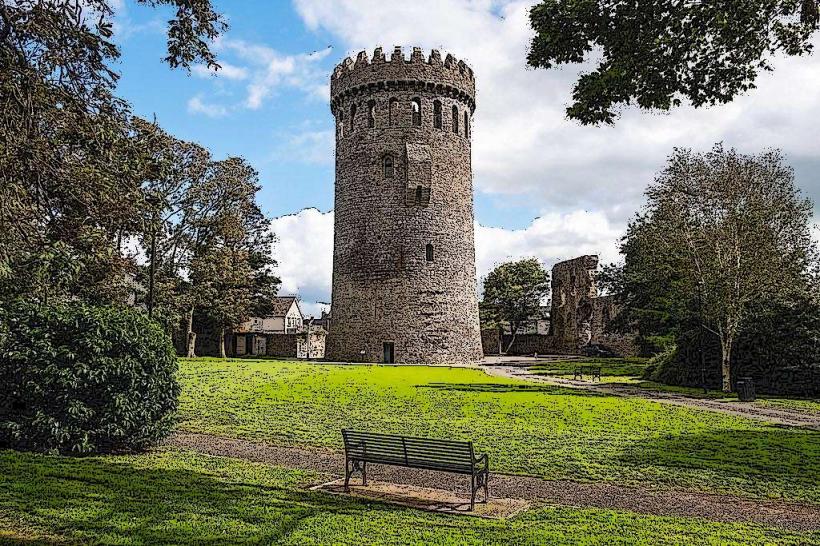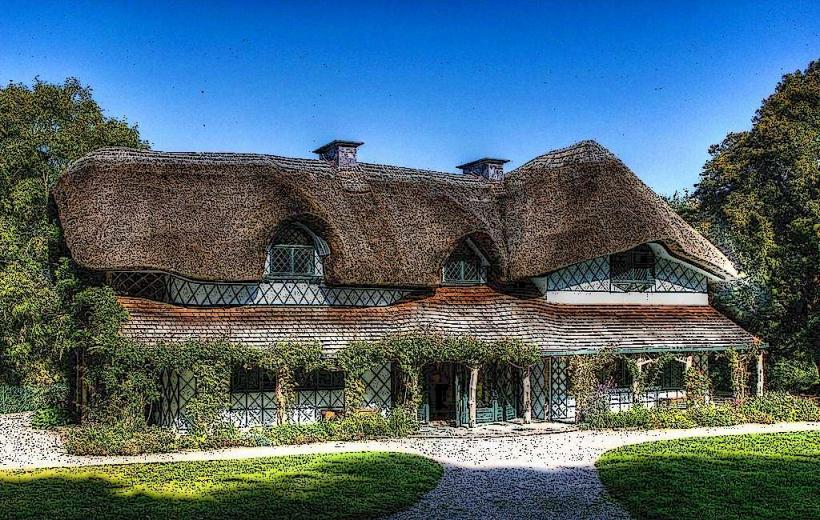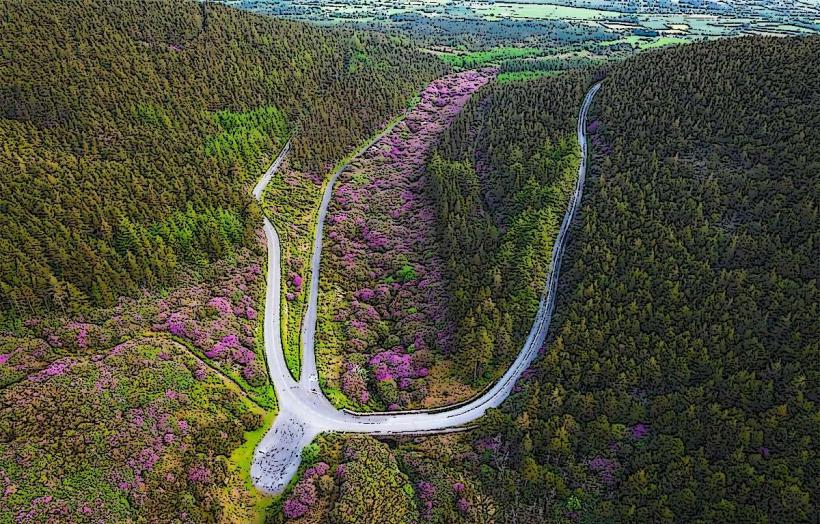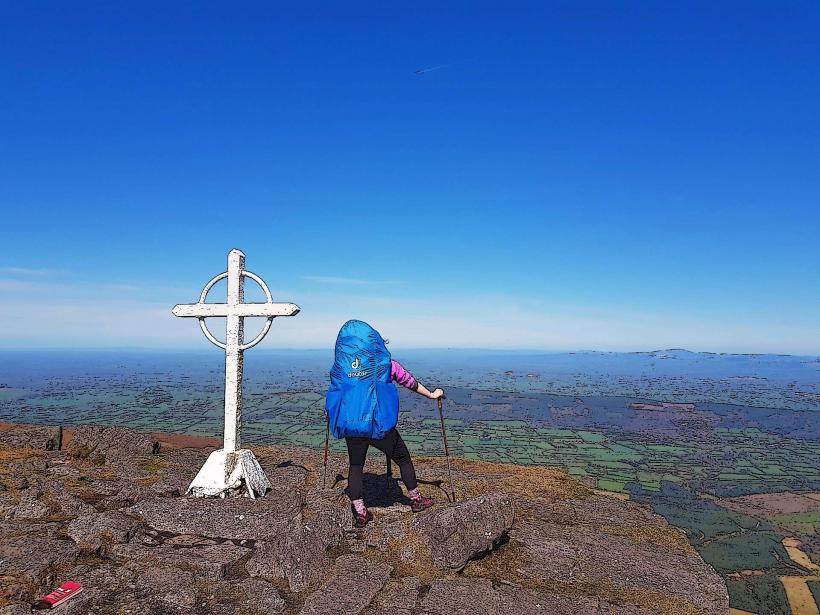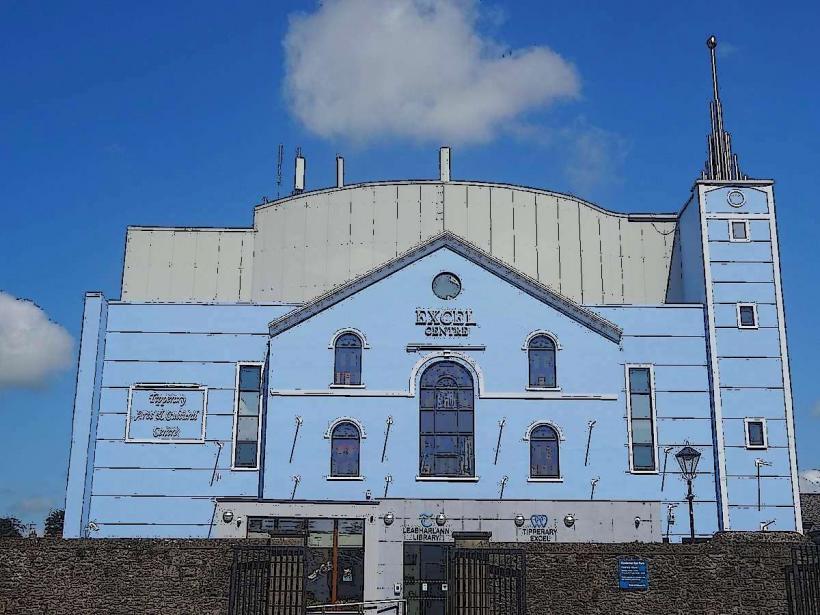Information
Landmark: Lough DergCity: Tipperary
Country: Ireland
Continent: Europe
Lough Derg is the third-largest lake in Ireland, located in the Midlands, straddling the counties of Tipperary, Clare, and Limerick. It is a lake of historical, cultural, and natural significance, offering a wide variety of activities and experiences for visitors. Lough Derg is an important destination for both tourism and recreation, and its stunning natural beauty has attracted visitors for centuries.
1. Geography and Size
- Location: Lough Derg is situated in the heart of the Midlands, with its northern shore forming part of County Tipperary, its western shore lying in County Clare, and its southern shore extending into County Limerick. The lake is part of the larger Shannon River system, and the River Shannon flows through it at its southern end.
- Size: The lake is approximately 35 kilometers (22 miles) long, and its surface area spans around 118 square kilometers (46 square miles). Its length and expansive waters make it one of Ireland's largest lakes.
- Depth: Lough Derg's average depth is relatively shallow compared to some other lakes, but it does have deeper sections reaching up to 27 meters (89 feet). The lake is fed by several rivers and streams, with the Shannon River acting as both an inlet and outlet.
2. Natural Beauty and Scenic Views
- Picturesque Landscape: The lake is surrounded by rolling hills, forests, and small islands, offering some of the most beautiful scenery in Ireland. The surrounding area features lush green fields, traditional Irish farmlands, and rocky outcrops.
- Islands: Lough Derg is dotted with over 20 islands, many of which are accessible by boat. The islands are often uninhabited and provide a peaceful escape for visitors. Saint's Island and Holy Island (with its monastic site) are among the most notable, with several islands offering picnic spots, wildlife, and historical significance.
3. Activities and Recreation
- Boating and Watersports: One of the most popular activities on Lough Derg is boating. The lake is a hotspot for both sailing and powerboating, and visitors can hire boats to explore the waters. The lake is part of the Shannon Navigation system, and as such, it is well-served by the Shannon Boat Hire Association and various boat rental facilities around the lake.
- Fishing: Lough Derg is a popular location for anglers, as it is home to a variety of fish species, including perch, pike, roach, and brown trout. Both shore fishing and boat fishing are common, with local clubs and guides offering specialized fishing tours and advice.
- Swimming and Water Sports: The lake's clear waters are perfect for swimming and water sports, including kayaking, canoeing, and windsurfing. The beaches along its shores offer ideal spots for relaxing and enjoying the outdoors.
- Walking and Hiking: The shores of Lough Derg are home to several beautiful walking and hiking trails, including the Lough Derg Way, a scenic walking route that follows the lake’s shore. Visitors can explore the surrounding hills and woodlands for breathtaking views of the lake and its islands.
- Cycling: Cycling is another great way to explore the area, with several cycle routes weaving through the villages, forests, and lake-side paths. The routes are accessible for all levels of cyclists, from beginners to experienced riders.
4. Historical and Cultural Significance
- Saint's Island: Lough Derg is home to several islands with significant historical and religious heritage. Saint's Island, located near the town of Dromineer in County Tipperary, is known for the Saints’ Holy Well and medieval ruins. Historically, it was the site of a monastery and was used as a pilgrimage site.
- Holy Island (Inis Cealtra): Perhaps the most famous of the islands, Holy Island is located in the north of Lough Derg and is notable for its early Christian monastic ruins. It is home to the remains of a monastic settlement, including a round tower, churches, and crosses. Visitors can take guided tours of the island, where they will learn about its historical importance and the role it played in Ireland's Christian heritage.
- Saint Patrick's Purgatory: Lough Derg is associated with the famous St. Patrick’s Purgatory pilgrimage, located on Station Island in the northern part of the lake. The pilgrimage site, which dates back to the 5th century, is a place where Christians believed they could experience a form of spiritual purification. It remains an important religious site and pilgrimage destination for many.
- Heritage Towns: Several towns and villages on the lake are steeped in history, including Ballina, Terryglass, and Dromineer. These towns feature historic churches, castle ruins, and traditional Irish cottages. Ballina is the largest town on the lake, while Dromineer is famous for its marina and lakeside walks.
5. Local Communities and Festivals
- Festivals and Events: Lough Derg and the surrounding towns host several annual festivals, including water-based events, traditional music festivals, and cultural celebrations. Dromineer hosts the Lough Derg Regatta, a popular event for sailing and rowing enthusiasts, while Ballina celebrates the Shannon Regatta with boat races and cultural activities.
- Local Culture: The lake's surrounding villages offer a blend of traditional Irish culture, with local pubs, folk music, and artisan shops selling handmade goods. Visitors can experience the local hospitality, as well as explore the rural charm of the area.
6. Access and Transport
- By Car: Lough Derg is easily accessible by car, with well-maintained roads connecting the major towns around the lake, including Ballina, Terryglass, Dromineer, and Mountshannon. It is located about two hours' drive from Dublin and Cork, making it an ideal destination for both day trips and longer stays.
- By Public Transport: There are bus services to towns near Lough Derg, but public transport options within the immediate lake area are limited. Car rental or private transport is recommended for full exploration.
- By Boat: Lough Derg is part of the Shannon Navigation system, so visitors can travel by boat along the lake and its tributaries.
7. Best Time to Visit
- Summer: The best time to visit Lough Derg is during the summer months (May to September), when the weather is warmer and most of the outdoor activities are accessible. This is when the lake is most vibrant, with festivals, boating events, and plenty of sunshine.
- Spring and Autumn: These seasons offer quieter visits with fewer crowds, making them ideal for those seeking a more peaceful experience. The surrounding countryside also changes color during autumn, making it an excellent time for scenic drives and photography.
- Winter: Lough Derg is less visited during the winter months, but it can still be a beautiful and tranquil spot for a winter retreat, with fewer tourists and a chance to experience the serene, wintry landscape.
8. Conclusion
Lough Derg is a stunning and tranquil destination that offers something for everyone, from boating and fishing to historical exploration and outdoor adventure. The lake’s picturesque scenery, rich history, and wide range of activities make it an ideal spot for those looking to experience the beauty and culture of Ireland’s heartland. Whether you're interested in outdoor pursuits, cultural exploration, or simply relaxing by the water, Lough Derg is a must-see destination.

